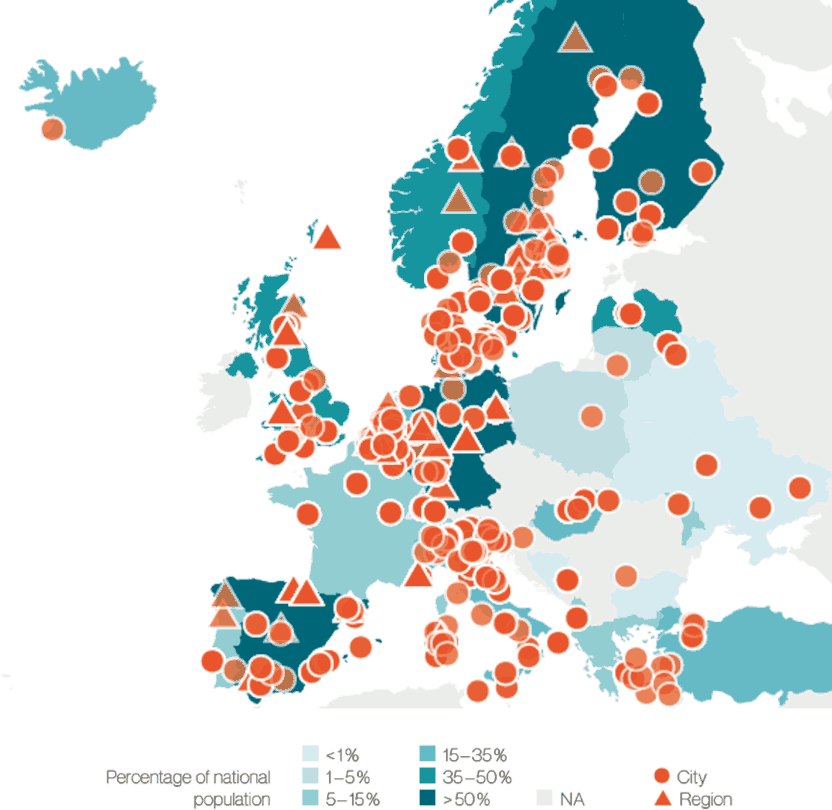
Subnational and non-state initiatives play an important role in climate action, and the number of net-zero emissions pledges is increasing rapidly among subnational and non-state actors. A new report looks into the current landscape and emission reduction potential of such initiatives in Europe.
The European Climate Pact launched in December 2020 invites people, communities and organisations to participate in climate action and build a greener Europe. Many initiatives are already in place, with cities, regions, companies and civil society taking action to reduce greenhouse gas emissions.
A report commissioned by the Commission sheds light on what we know today from a scientific perspective about the myriad of such initiatives in Europe that were created in the run-up to and since the Paris Agreement. It also asks how best to measure the progress achieved.
Alongside targets and action at national level, action by subnational and non-state actors is increasingly significant in the EU. Data shows that in 2016, around 40% of EU greenhouse gas (GHG) emissions were covered by short- to mid-term targets (2020-2030) of individual actors, including cities, regions and companies.
The number of net-zero emissions pledges is also increasing rapidly among EU sub/non-state actors. As of October 2020, 36% of the EU’s total population live in cities or regions with a net-zero emissions target. In addition, over 130 international cooperative initiatives focus on reducing GHG emissions across all sectors in the EU with ambitious, aspirational targets.

Figure: Map of cities and regions pursuing net-zero emissions (for countries coloured grey, no net-zero targets were recorded). Source: Data-Driven EnviroLab & NewClimate Institute, 2020
The report also looks into the progress made by sub/non-state climate actors toward reaching their targets and goals. While the direct impact on GHG emission reductions is challenging to measure, substantial outputs have been delivered by initiatives aiming for indirect contributions to emission reductions, and literature indicates that individual European cities have made good progress towards their 2020 targets.
Developing a methodology that clearly tracks progress in terms of reducing emissions is challenging, but first results from the work of international research groups show that sub/non-state actors could make significant contributions to GHG emission reductions in the EU. This mitigation potential can however not be isolated from national or EU-level climate ambitions: the emission reductions can only be realised in coordination with national and EU-level policies.
The high emission reduction potential shows that there is willingness to act on the ground and that more ambition is possible, but enhanced collaboration between sub/non-state actors and national or EU-level policymakers is needed.
Read more:
Details
- Publication date
- 5 February 2021
- Author
- Directorate-General for Climate Action
